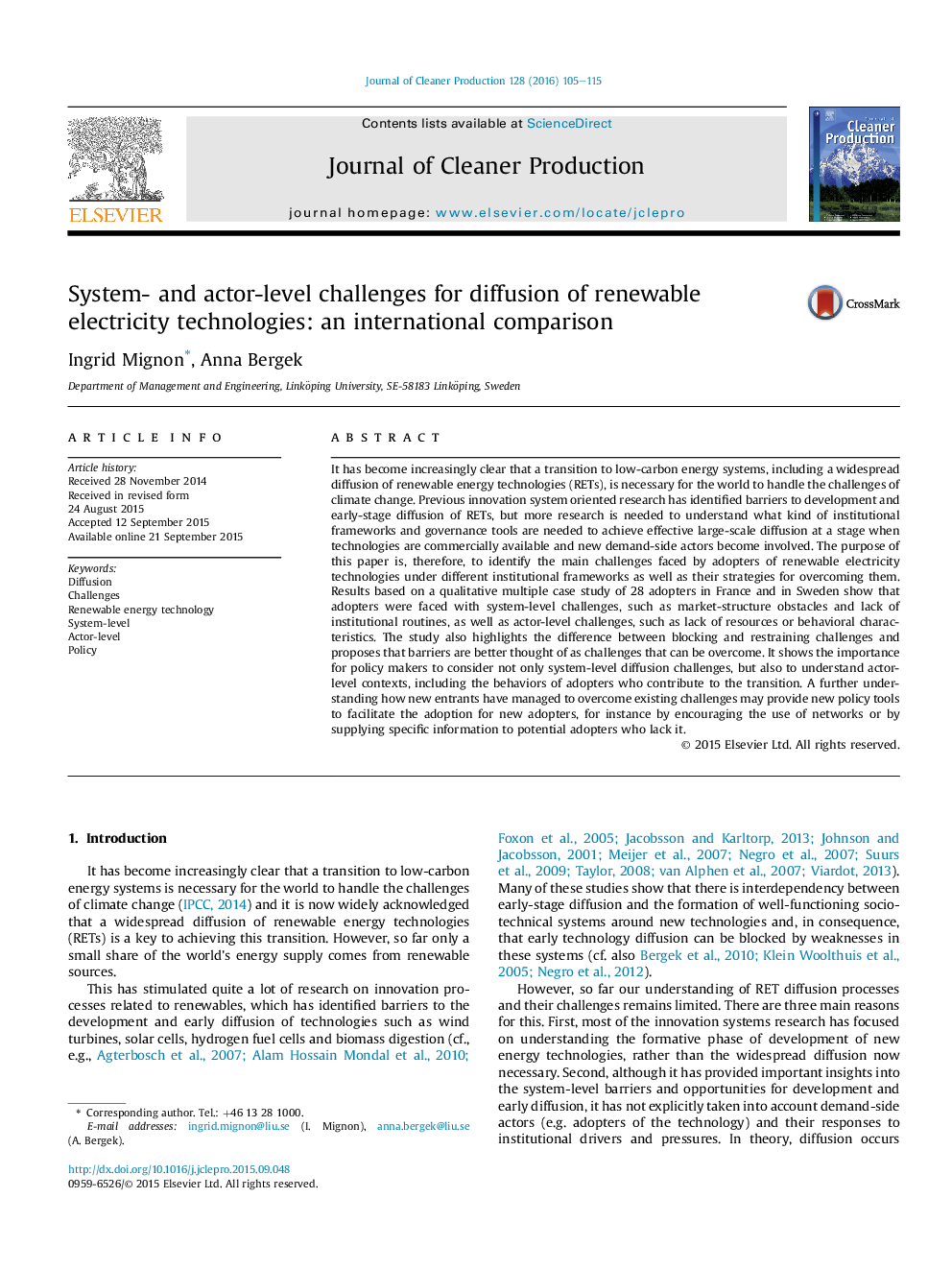| Article ID | Journal | Published Year | Pages | File Type |
|---|---|---|---|---|
| 1744134 | Journal of Cleaner Production | 2016 | 11 Pages |
•A new framework for the study of innovation diffusion challenges is introduced.•Both system- and actor-level challenges should be considered by future policies.•There is a distinction to be made between blocking and restraining challenges.•Some actor characteristics lead to innovative solutions to system-level challenges.•Future policies should target both actor- and system-level challenges.
It has become increasingly clear that a transition to low-carbon energy systems, including a widespread diffusion of renewable energy technologies (RETs), is necessary for the world to handle the challenges of climate change. Previous innovation system oriented research has identified barriers to development and early-stage diffusion of RETs, but more research is needed to understand what kind of institutional frameworks and governance tools are needed to achieve effective large-scale diffusion at a stage when technologies are commercially available and new demand-side actors become involved. The purpose of this paper is, therefore, to identify the main challenges faced by adopters of renewable electricity technologies under different institutional frameworks as well as their strategies for overcoming them. Results based on a qualitative multiple case study of 28 adopters in France and in Sweden show that adopters were faced with system-level challenges, such as market-structure obstacles and lack of institutional routines, as well as actor-level challenges, such as lack of resources or behavioral characteristics. The study also highlights the difference between blocking and restraining challenges and proposes that barriers are better thought of as challenges that can be overcome. It shows the importance for policy makers to consider not only system-level diffusion challenges, but also to understand actor-level contexts, including the behaviors of adopters who contribute to the transition. A further understanding how new entrants have managed to overcome existing challenges may provide new policy tools to facilitate the adoption for new adopters, for instance by encouraging the use of networks or by supplying specific information to potential adopters who lack it.
